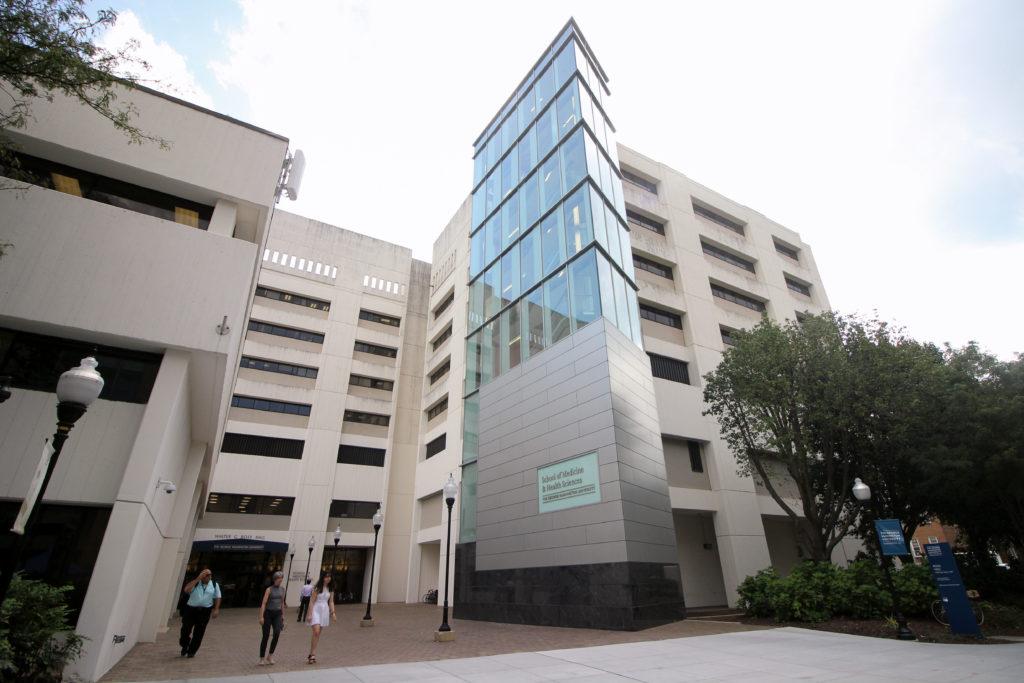The National Institutes of Health awarded the School of Medicine and Health Sciences a $22 million grant last month to support a repository of HIV-related biological material.
The AIDS and Cancer Specimen Resource – primarily housed in the medical school – is a bank of HIV-associated cancer tissue samples, biological fluids and clinical information about patients available for use in medical research. HIV oncology experts said renewing the resource provides researchers with easy access to tissue samples that are otherwise difficult to obtain and advances researchers’ study of the relationship between HIV and cancer.
Sylvia Silver, the GW Biorepository director and a medical school professor, said increasing funding to run the resource will lead to advances in HIV malignancy research, which is especially relevant given that cancer is one of the leading causes of death for people infected with HIV.
“As more people live longer infected with HIV, they are experiencing an elevated risk for cancer,” Silver said in an email.
She said the resource will use the funding to collect, process, store and distribute tissue samples to researchers in the field and to support research on biospecimens.
Investigators at GW and the University of California, San Francisco oversee the resource and collect cancerous tumor tissues from individuals with HIV to be globally available for researchers studying HIV and HIV-associated cancers, according to a medical school release.
HIV-infected individuals have a “substantially” higher risk of developing and dying from cancer, according to the National Cancer Institute website. Compared to the general population, people with HIV are 500 times more likely to be diagnosed with Kaposi sarcoma, a cancer that causes lesions in soft body tissues like skin and internal organs, according to the NCI website.
People with HIV are 12 times more likely to be diagnosed with non-Hodgkin lymphoma – a cancer that affects the lymph nodes – and HIV-infected women are three times more likely to be diagnosed with cervical cancer, the NCI website states.
“The incidence of certain cancers in people infected with HIV is way above what is seen in the general population,” Silver said.
Ronald Collman, the director of the Penn Center for AIDS Research at the University of Pennsylvania, said the tissue repository increases researchers’ contact with tissues they can analyze to see how genes are expressed and learn more about how viruses cause disease.
Collman said the repository grants access to large quantities of tissue samples at once, which helps researchers save time because performing biopsies to glean tissue samples from large groups of patients involved with medical studies is time-consuming.
“It really accelerates the process if you have a central infrastructure that develops this so that materials are on hand so that every research project doesn’t have to reinvent the wheel to access the tissues,” he said.
Collman added that researchers can further study of how particular genes contribute to the onset of HIV-associated cancer because the repository gives researchers access to large quantities of tissue samples.
“The good thing is that people are living longer, the bad thing is that they are living long enough now to be experiencing a much higher rate of cancers than the general population,” he said.
Robert Kalayjian, the division director of infectious diseases at Metro Health — a health clinic in Ohio — said the tissue repository can help researchers better understand HIV as a disease. He said medical researchers can extrapolate what they learn about HIV-related malignancies – cancerous growths – to understand how cancer affects non-HIV-infected individuals as well.
“It is a disease that has a tremendous effect on the immune system, and consequently, we are better able to understand how the immune system contributes to health in general through studying HIV,” Kalayjian said.
David Margolis, the director of the HIV Cure Center at the University of North Carolina at Chapel Hill, said the tissue specimen repository is “key” for research in this field because the resource allows researchers to share access throughout the research community.
“Without this, many labs would have to spend time and cost making home-brew resources for their work, without the assurance that the reagents were the same from lab to lab,” Margolis said in an email.





